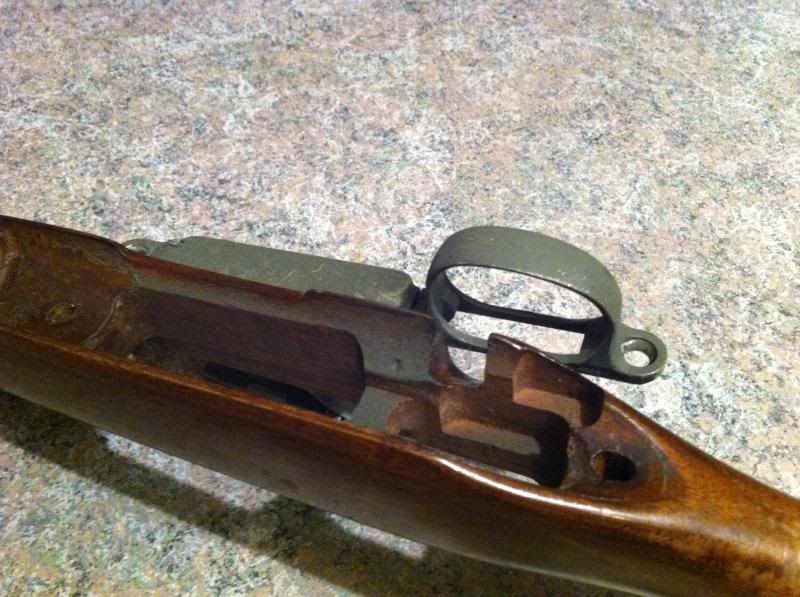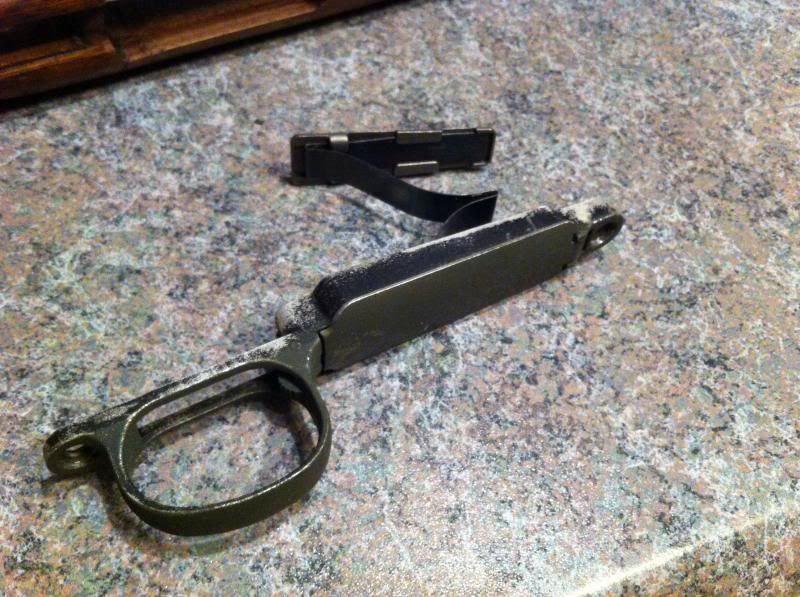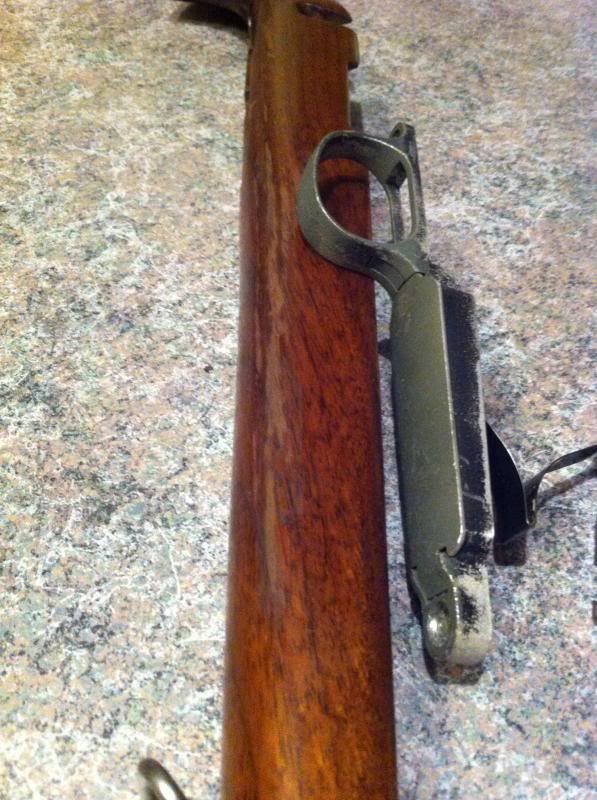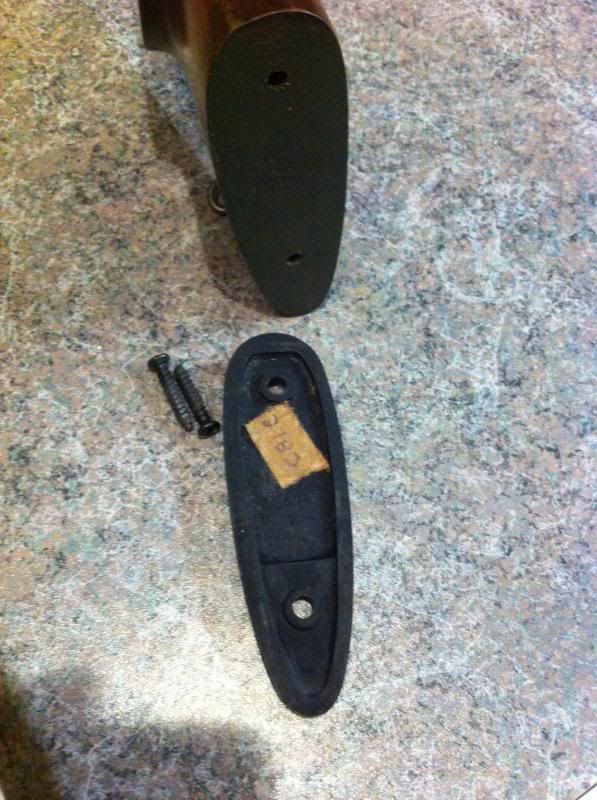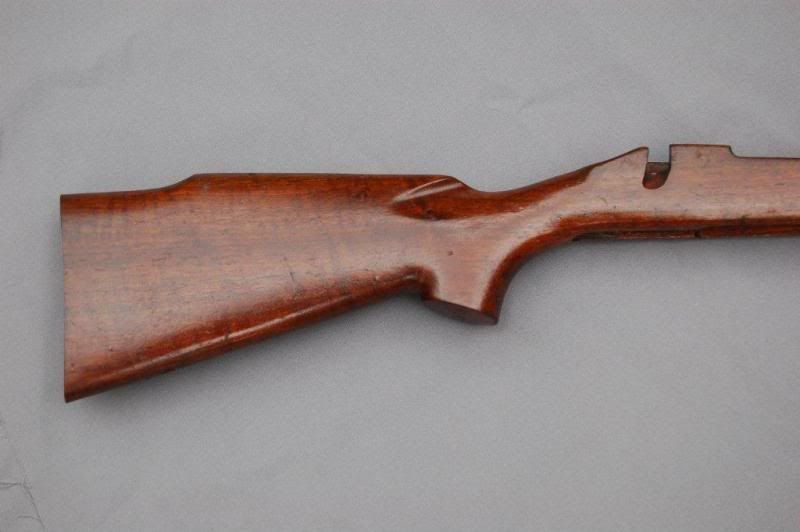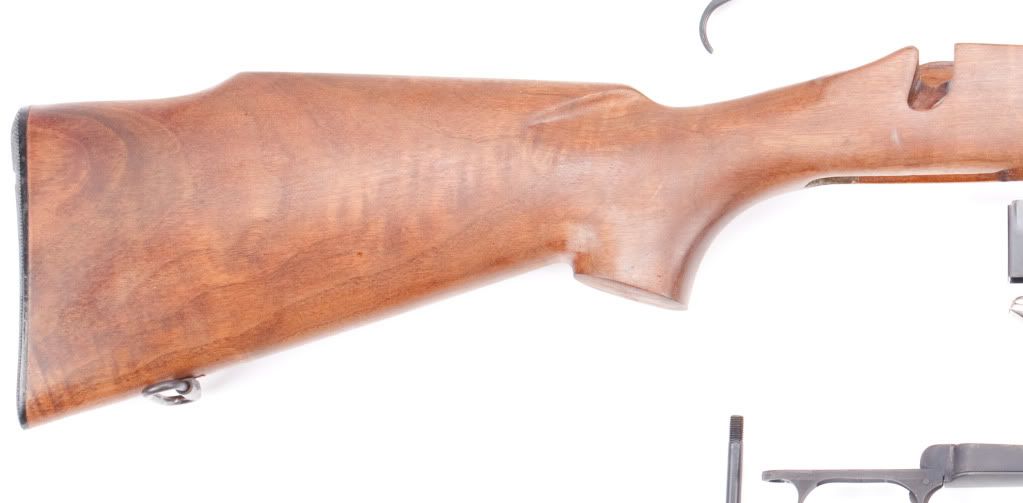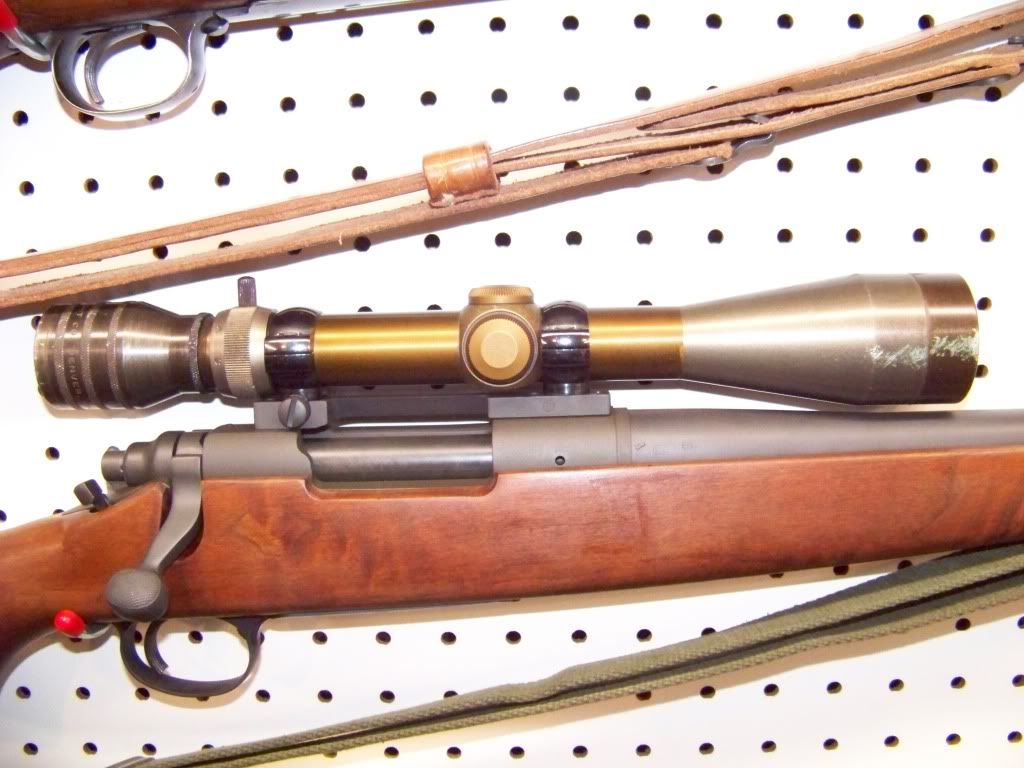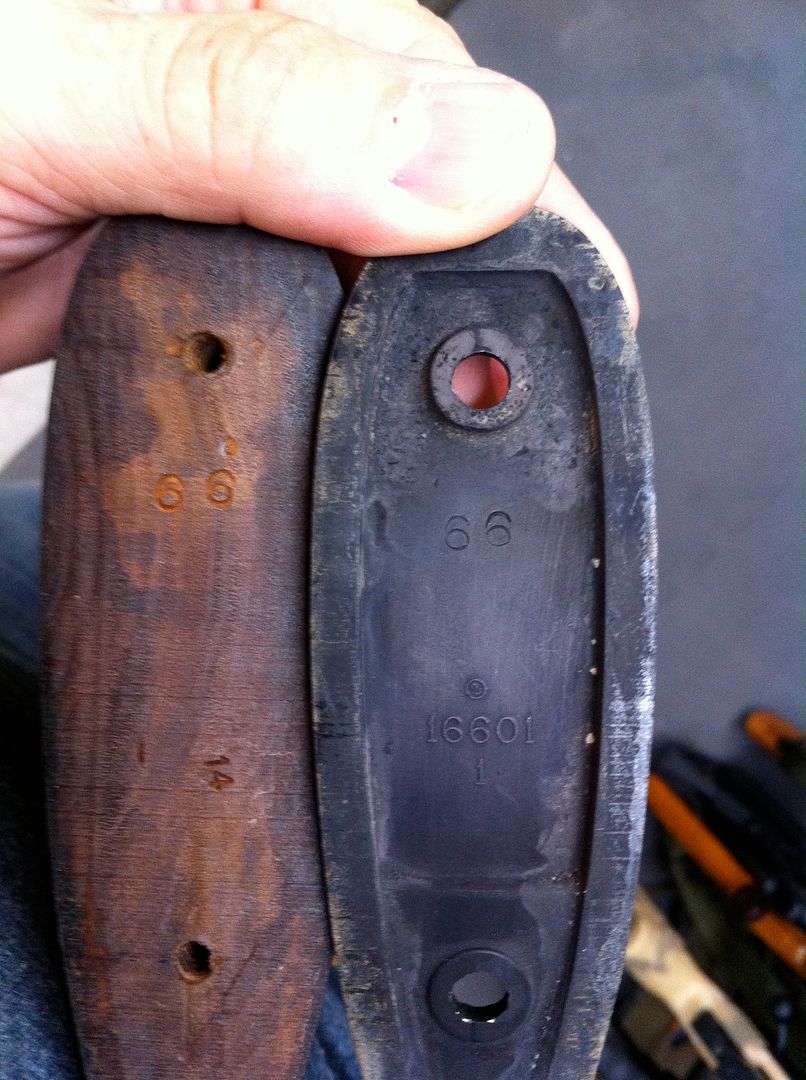One of my buddies went to a gunshow last weekend. I couldnt make it, so I asked him to look for anything Remington 700, USMC stuff, Lee Enfield parts... I got a call from him 5 min after the doors opened. He waited 45 min at -15 to have first dibs on interesting bargains.
He told me a gentleman was selling a bunch of stuff, including a Remington wood stock without checkering. That caught his attention. Seller told him it came off a "large barrel Remington sniper gun. You know, for the soldiers?"
That's vague so I asked a few questions, he cut me off and said; "Man, there are 15 people waiting in line behind me to see his stuff. I buy now or I go to the next booth." It was cheap so I gave him the go ahead. At that price, I dont mind loosing a few bucks if its worthless. He text me back later and said he will mail the stock to me on Monday (thats last week).
Got the stock On Friday. I was stoked. I am confident that this is a genuine M40 stock.
- Correct metal checkered buttplate
- Round tip heavy barrel channel
- Its unfortunate, but I had to remove some material from the barrel channel to look for a threaded insert for the front swivel. Its there. I dont know any other Remington guns that uses a threaded front swivel like the M40.
- It is glass bedded, and the barrel channel has been re-inforced with some type of material (fiberglass?).
- It came with a beat-up bottom metal painted in flat olive drab and a milled follower.
- We can clearly see some paint overspray in the receiver area, same olive drab color.
- Nylon sling with parkerized ends
The gentleman told him he didnt know much about it. Except that it was on a old Rem 700 rifle, he removed the stock because it was beat-up. Used some thinner to get most of the paint off but stopped when he notice some type of varnish under it. He replaced it and still have the original rifle. Got it from a flee market in Vermont sometimes in the 80's. He was busy selling his stuff and answering customers questions. "No time to chat" he said to my buddy. At least he gave him his name, so I will try to get in touch.
The buttplate screws are Loctite. I'm afraid I will strip the screw heads, it wont move. Same thing with the front swivels, the insert started to rotate slightly so I stopped. There must be some Loctite in there too. Which would be correct for a heavy-duty battle rifle.
It is beat-up. The slings smells like old socks!
From Peter Senich's book:
Scout-Sniper Charles B. Mawhinney with USMC M700 sniper rifle (An Hoa, 1968). According to Mawhinney, “The rifle stock was painted green when the weapon was issued.” (Early efforts to waterproof sniper rifle stocks in Vietnam included “sealing measures” involving the use of paint. USMC ordnance papers indicate gray or green were “acceptable colors.”)
Solutions to problem with the Remington M40 rifle:
The stock warps at the forend, touching the barrel and adversely affecting accuracy. Additionally, as the weather conditions change, the stock tends to dry or absorb moisture causing the receiver to become excessively loose or tight, adversely affecting the zero and accuracy of the rifle. The brass pin to the rear of the magazine mortise is ineffective. The stock is not sufficiently waterproofed as the oil treatment is totally unsatisfactory in this climate.
Comment: All rifle stocks have been fiberglassed locally through the receiver section and the barrel channels have been relieved to prevent stock warpage affecting accuracy.
Recommended Solution:
a. Adopt a high grade, pressure epoxy-impregnated stock.
b. Fiberglass the receivers and full-float the barrel channels at the factory. Waterproof the barrel channels.
c. Replace the brass pin with a Mauser-type special stock lock.
d. Adopt the use of a waterproof finish such as hard polyurethane varnish, then paint the stocks a dull-grey or non-gloss dark green to eliminate reflection.
c. Determination of the most effective means for impregnation of the stock to prevent warping.
NOTE: Impregnating wooden stocks with epoxy served as an effective means of waterproofing the stock and eliminating warpage. Although linseed oil, in various forms and mixtures, was employed for waterproofing sniper rifle stocks in Vietnam, according to a III MAF field report, “the use of linseed oil is not considered an adequate preventative measure.”
NOTE: Appropriate instructions pertaining to glass-bedding and waterproofing of stocks were provided to the CG, III MAF in a CMC letter (8 May 1968), and to the field units in a bulletin dated 16 December 1968. In response to the recommendation that sniper rifle stocks be glass-bedded and waterproofed prior to shipment to Southeast Asia, the MTU, Quantico, Virginia, was tasked (6 June 1969) with “waterproofing and glass-bedding all Marine Corps sniper rifle stocks that are presently held in the supply centers.” The term glass-bedding” is generally known as the process of using liquid fiberglass, epoxy, or similar materials to obtain an exact matching fit between the stock and the action/receiver. This procedure was considered essential in maintaining accuracy with a competition and/or sniping rifle. Various commercial bedding products were employed by the Army and Marine Corps MTUs for this purpose. Of further interest in this matter, even though authorized bedding materials were eventually shipped overseas, according to a veteran RTE armorer, “We used steel epoxy from the AMTRAC repair kits for bedding M700 sniper rifles when nothing else was available.” Measures such as this were indicative of the improvising that took place in Vietnam.
Looks like this stock went through some of the recommended solutions; it was painted, with a varnish under it that is more effective than linseed oil. Action is bedded, and looks like the barrel channel was bedded/waterproofed? I usually am a non-believer if there is no paperwork. But, I am very confident that this is genuine. The finish looks exactly the same as Chuck's rifle, and some other genuine documented M40 rifles.
Please let me know if you find any other specific details on the following pictures. I used different lighting (day, night) to capture all the details.
Thanks for looking. Any opinions would be greatly appreciate.


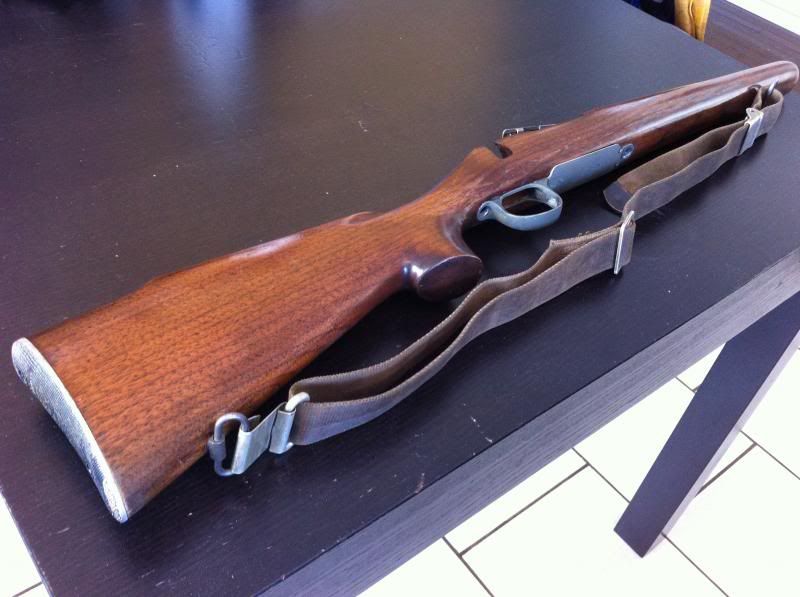

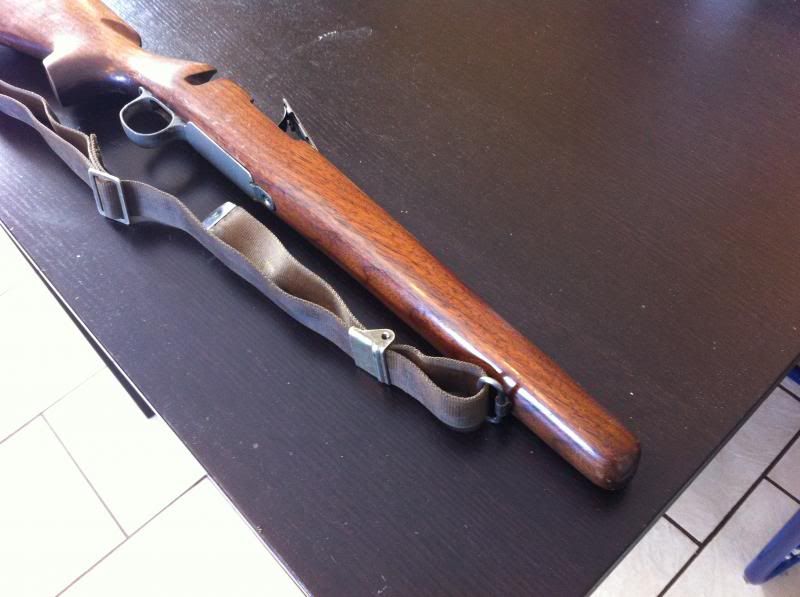
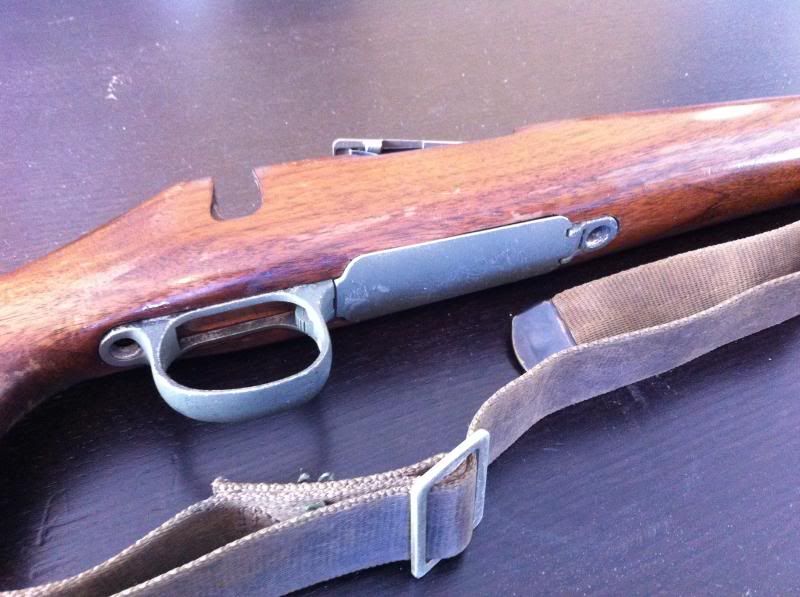

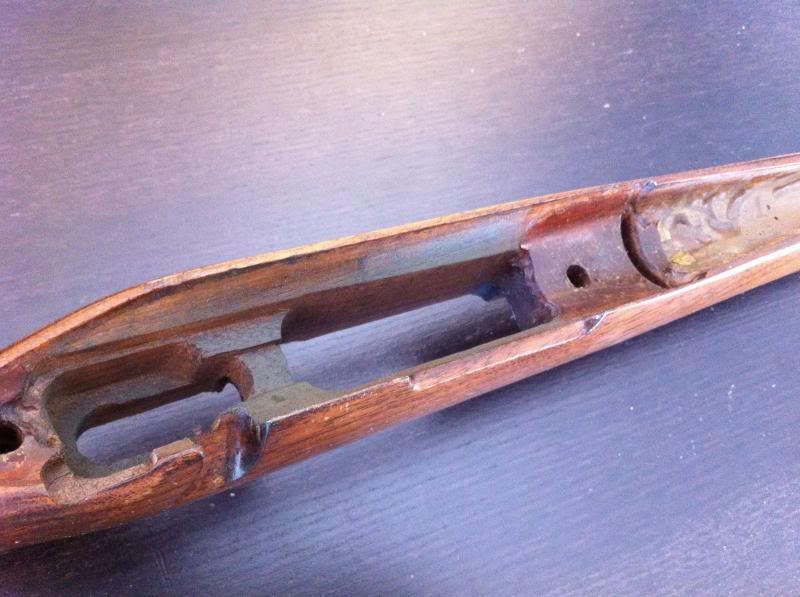
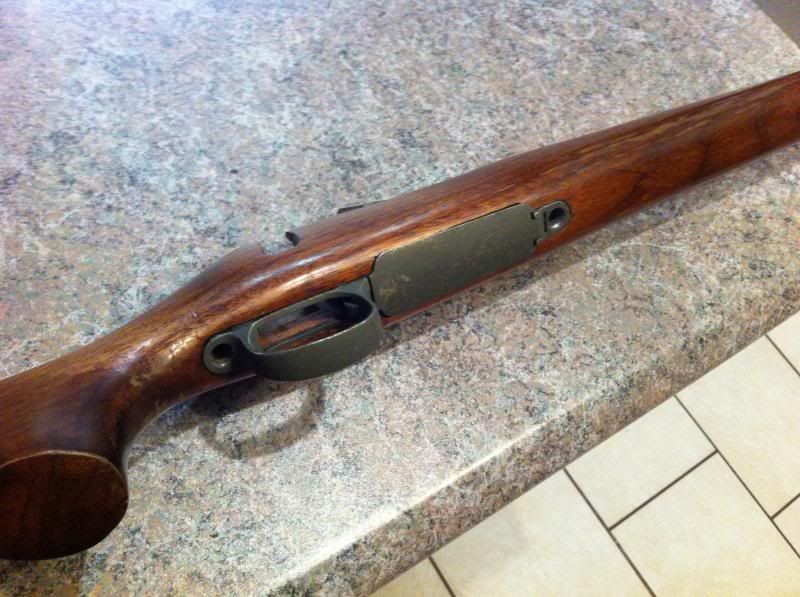
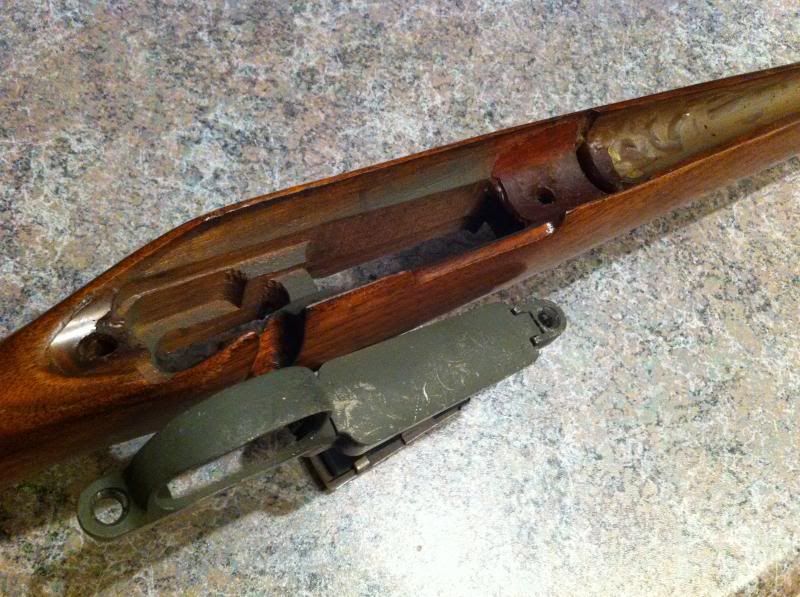
He told me a gentleman was selling a bunch of stuff, including a Remington wood stock without checkering. That caught his attention. Seller told him it came off a "large barrel Remington sniper gun. You know, for the soldiers?"
That's vague so I asked a few questions, he cut me off and said; "Man, there are 15 people waiting in line behind me to see his stuff. I buy now or I go to the next booth." It was cheap so I gave him the go ahead. At that price, I dont mind loosing a few bucks if its worthless. He text me back later and said he will mail the stock to me on Monday (thats last week).
Got the stock On Friday. I was stoked. I am confident that this is a genuine M40 stock.
- Correct metal checkered buttplate
- Round tip heavy barrel channel
- Its unfortunate, but I had to remove some material from the barrel channel to look for a threaded insert for the front swivel. Its there. I dont know any other Remington guns that uses a threaded front swivel like the M40.
- It is glass bedded, and the barrel channel has been re-inforced with some type of material (fiberglass?).
- It came with a beat-up bottom metal painted in flat olive drab and a milled follower.
- We can clearly see some paint overspray in the receiver area, same olive drab color.
- Nylon sling with parkerized ends
The gentleman told him he didnt know much about it. Except that it was on a old Rem 700 rifle, he removed the stock because it was beat-up. Used some thinner to get most of the paint off but stopped when he notice some type of varnish under it. He replaced it and still have the original rifle. Got it from a flee market in Vermont sometimes in the 80's. He was busy selling his stuff and answering customers questions. "No time to chat" he said to my buddy. At least he gave him his name, so I will try to get in touch.
The buttplate screws are Loctite. I'm afraid I will strip the screw heads, it wont move. Same thing with the front swivels, the insert started to rotate slightly so I stopped. There must be some Loctite in there too. Which would be correct for a heavy-duty battle rifle.
It is beat-up. The slings smells like old socks!
From Peter Senich's book:
Scout-Sniper Charles B. Mawhinney with USMC M700 sniper rifle (An Hoa, 1968). According to Mawhinney, “The rifle stock was painted green when the weapon was issued.” (Early efforts to waterproof sniper rifle stocks in Vietnam included “sealing measures” involving the use of paint. USMC ordnance papers indicate gray or green were “acceptable colors.”)
Solutions to problem with the Remington M40 rifle:
The stock warps at the forend, touching the barrel and adversely affecting accuracy. Additionally, as the weather conditions change, the stock tends to dry or absorb moisture causing the receiver to become excessively loose or tight, adversely affecting the zero and accuracy of the rifle. The brass pin to the rear of the magazine mortise is ineffective. The stock is not sufficiently waterproofed as the oil treatment is totally unsatisfactory in this climate.
Comment: All rifle stocks have been fiberglassed locally through the receiver section and the barrel channels have been relieved to prevent stock warpage affecting accuracy.
Recommended Solution:
a. Adopt a high grade, pressure epoxy-impregnated stock.
b. Fiberglass the receivers and full-float the barrel channels at the factory. Waterproof the barrel channels.
c. Replace the brass pin with a Mauser-type special stock lock.
d. Adopt the use of a waterproof finish such as hard polyurethane varnish, then paint the stocks a dull-grey or non-gloss dark green to eliminate reflection.
c. Determination of the most effective means for impregnation of the stock to prevent warping.
NOTE: Impregnating wooden stocks with epoxy served as an effective means of waterproofing the stock and eliminating warpage. Although linseed oil, in various forms and mixtures, was employed for waterproofing sniper rifle stocks in Vietnam, according to a III MAF field report, “the use of linseed oil is not considered an adequate preventative measure.”
NOTE: Appropriate instructions pertaining to glass-bedding and waterproofing of stocks were provided to the CG, III MAF in a CMC letter (8 May 1968), and to the field units in a bulletin dated 16 December 1968. In response to the recommendation that sniper rifle stocks be glass-bedded and waterproofed prior to shipment to Southeast Asia, the MTU, Quantico, Virginia, was tasked (6 June 1969) with “waterproofing and glass-bedding all Marine Corps sniper rifle stocks that are presently held in the supply centers.” The term glass-bedding” is generally known as the process of using liquid fiberglass, epoxy, or similar materials to obtain an exact matching fit between the stock and the action/receiver. This procedure was considered essential in maintaining accuracy with a competition and/or sniping rifle. Various commercial bedding products were employed by the Army and Marine Corps MTUs for this purpose. Of further interest in this matter, even though authorized bedding materials were eventually shipped overseas, according to a veteran RTE armorer, “We used steel epoxy from the AMTRAC repair kits for bedding M700 sniper rifles when nothing else was available.” Measures such as this were indicative of the improvising that took place in Vietnam.
Looks like this stock went through some of the recommended solutions; it was painted, with a varnish under it that is more effective than linseed oil. Action is bedded, and looks like the barrel channel was bedded/waterproofed? I usually am a non-believer if there is no paperwork. But, I am very confident that this is genuine. The finish looks exactly the same as Chuck's rifle, and some other genuine documented M40 rifles.
Please let me know if you find any other specific details on the following pictures. I used different lighting (day, night) to capture all the details.
Thanks for looking. Any opinions would be greatly appreciate.












